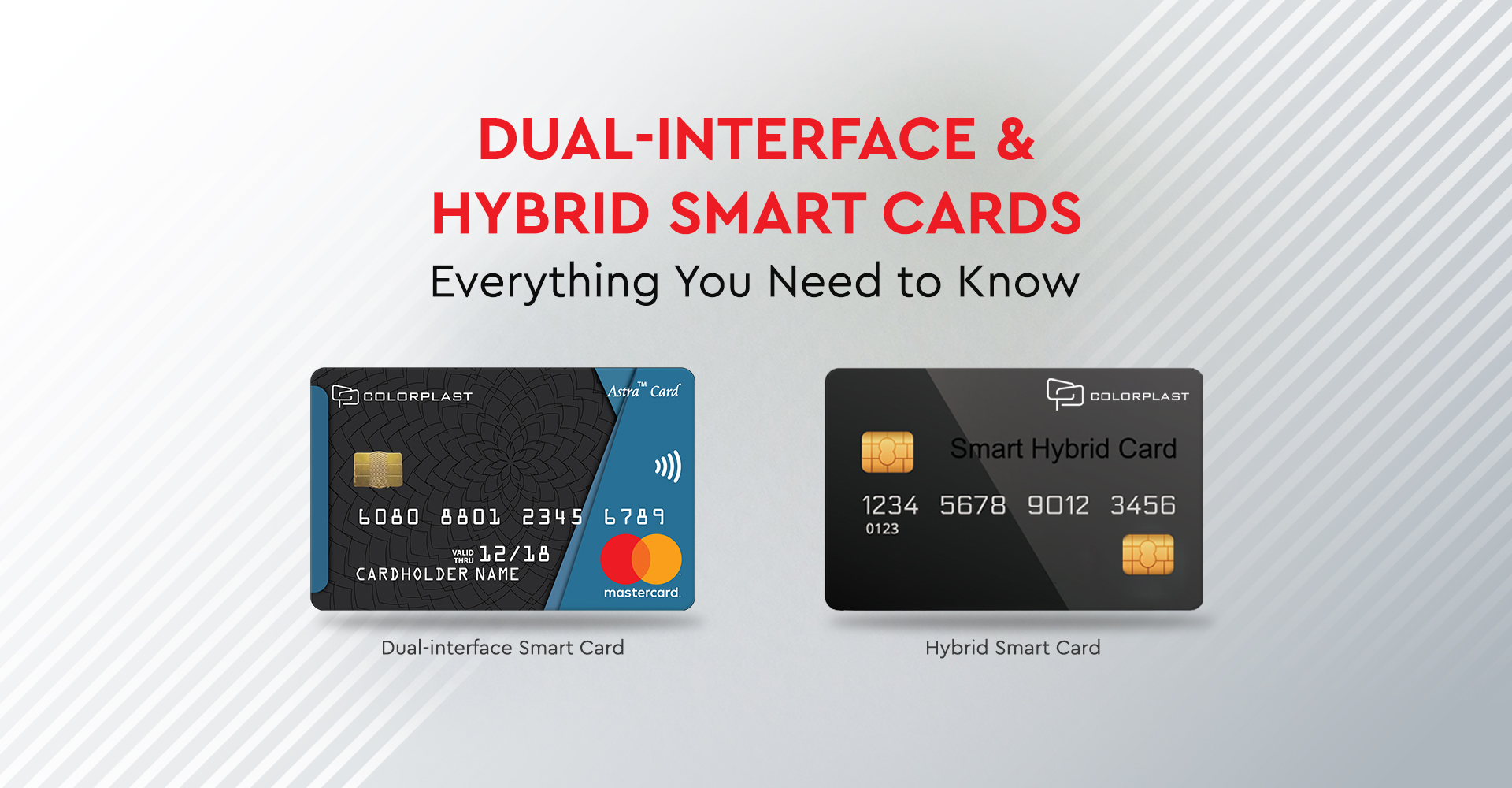
Globally, smart cards are being adopted more to combat increased security threats and fraudulent activities. Industries formerly served by magnetic stripe and barcode card technologies have started adopting smart cards to meet their needs – complete point-of-sale transactions, maintain records, secure computers, and protect facilities. The increasing data breaches are driving smart card technology into the spotlight. Additionally, it is a great technology that will increase the security of the Internet of Things (IoT) as it transitions to the Internet of Trusted Things (IoT2).
Dual-interface smart cards
These cards combine two interfaces, including contact and contactless. The same chip can be accessed by either method with these cards, making them extremely secure. These cards also contain two different types of chips: microcontroller chips and memory chips. The memory chip functions as a small floppy disk, but with added security. Microcontrollers are significantly cheaper than memory chips, but they do not offer as much data security as memory chips. Information in the microcontroller chip can be added, removed, or otherwise modified. The microcontroller has input/output ports, an operating system, and a hard drive. A microcontroller embedded in a smart card is capable of storing large amounts of data, performing on-card functions (e.g., encryption and digital signatures), and communicating intelligently with a smart card reader.
Hybrid smart cards
The hybrid cards are composed of more than one smart card with no interface between the chips and are essentially multipurpose cards for different uses. So when choosing a hybrid card, consider one that incorporates an embedded microprocessor along with an RFID proximity chip. The contact chip provides secure network access and secures messaging for Employee ID Cards and badges, while the proximity chip allows “Tap and Go” functions such as Time and Attendance and access to buildings and rooms.
Pros and Cons – Dual Interface Cards
Pros
- Multiple systems can be connected to a computer with two network cards. Software developers typically require both a development and test environment. Developers can access both networks from one computer when they have two network connections. Otherwise, they have to use separate computers for each task.
- Training software is used by most large corporations to help employees learn to use company-issued computer applications. Usually, these training networks are independently operated. Two network cards allow access to both training and production networks. A single computer can serve both as a training and production device, saving organizations money.
Cons
- Dual network cards raise security concerns. When a computer has two network cards, it can be used as a propagation device for viruses. The hacker can spread malicious software to multiple networks if he breaks into a computer with dual cards.
- Several network cards cannot be attached to a single computer in a business that requires secret network environments. Because of the vulnerability of data exposure and cyberspace infiltration concerns, this is considered a security violation. Using dual network cards should be avoided by companies with proprietary and secret data.
Pros and Cons – Hybrid Cards
Pros
- Many big companies use hybrid cards to manage access across different sites and buildings so that they can offer a smooth experience to their employees. There is great flexibility in using magnetic stripes and chip cards on the card – for example, one technology could be used for access control and time recording, while the other could be used for payment at a restaurant.
- With hybrid cards, you can update the badging system on your existing hardware. E-cards preserve the infrastructure and card technology of legacy systems while adding new applications and the infrastructure of e-cards – all in one single ID card.
Cons
- Hybrid smart card authentication requires an associated certificate, which is not revalidated before single-factor authentication is used. Further, it cannot determine when the certificate has been revoked.
- In addition, each hybrid smart card must be tapped before inserting it into the reader.
Hybrid cards do not communicate between their contact and contactless components. As a result, the two chips are managed separately, making it impossible to update them both simultaneously. In markets where higher security applications are required and where the cards must be used for multiple purposes, dual-interface cards are becoming more popular.
